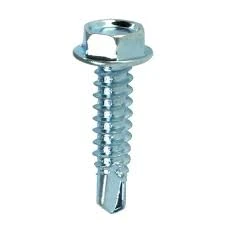double threaded stud
Understanding Double Threaded Studs A Comprehensive Overview
In the world of engineering, construction, and manufacturing, fasteners play a crucial role in ensuring structural integrity and functionality. Among the myriad of fasteners available, double threaded studs are particularly significant due to their versatility and effectiveness in various applications. This article delves into the characteristics, applications, and benefits of double threaded studs.
What is a Double Threaded Stud?
A double threaded stud is a type of fastener that features threads on both ends, while the middle section remains unthreaded. This unique design allows the stud to be inserted into a pre-drilled hole while providing the capability to secure components on either side. The two ends can have different thread sizes, profiles, or materials, catering to specific requirements of various applications.
Characteristics of Double Threaded Studs
The defining characteristic of double threaded studs is their dual threading. The threads provide friction and gripping ability, ensuring that the stud can handle dynamic loads without loosening. They are available in various materials, including steel, stainless steel, and alloys, which allow them to be used in different environments, including those exposed to moisture, heat, or corrosive substances.
Additionally, double threaded studs can come in various lengths and diameters, making them adaptable to different design requirements. The unthreaded portion typically serves as an alignment guide, reducing the risk of misalignment during installation. This feature is particularly advantageous in high-precision applications where accuracy is paramount.
Applications of Double Threaded Studs
Double threaded studs are utilized across a diverse array of industries. They are commonly found in automotive, aerospace, construction, and machinery sectors. Some specific applications include
1. Automotive Industry In vehicles, double threaded studs are frequently used for mounting components such as engines, frames, and body panels. Their ability to provide a tight grip makes them ideal for high-stress environments.
2. Construction Double threaded studs are essential in structural applications, including connecting beams and columns. Their design allows for efficient load distribution, contributing to the overall stability of the structure.
double threaded stud

3. Machinery In machinery, double threaded studs are often used to secure covers, panels, and other components. Their dual-thread design ensures that parts can be easily assembled and disassembled, facilitating maintenance.
4. Aerospace In the aerospace sector, where weight and reliability are critical, double threaded studs offer a lightweight yet robust fastening solution. They help in assembling various aircraft components, from fuselage parts to wing structures.
Benefits of Using Double Threaded Studs
The use of double threaded studs brings several advantages
- Enhanced Grip The dual threading allows for a more secure grip on components, reducing the risk of loosening due to vibration or dynamic forces.
- Versatility With various sizes and materials available, double threaded studs can be tailored to suit specific applications and environments, making them a versatile choice for engineers.
- Ease of Assembly The design of double threaded studs often simplifies the assembly process, enabling quicker installations and repairs.
- Structural Integrity The robust nature of double threaded studs contributes to the structural integrity of assemblies, ensuring long-term reliability.
Conclusion
In summary, double threaded studs are a vital component in many industries, providing secure and reliable fastening solutions. Their unique design, characterized by threads on both ends and an unthreaded middle, sets them apart from standard studs. As industries continue to evolve and demand more innovative fastening solutions, double threaded studs will undoubtedly remain a staple in engineering design and applications. Their versatility, ease of use, and strength make them an invaluable asset in ensuring the performance and longevity of various structures and machines.
-
Weatherproof Plastic Expansion Anchors for OutdoorNewsJun.06,2025
-
Sustainability in the Supply Chain: Eco-Friendly TEK Screws ProductionNewsJun.06,2025
-
Load-Bearing Capacity of External Insulation FixingsNewsJun.06,2025
-
Double Head Bolts: Enhancing Efficiency in Industrial MachineryNewsJun.06,2025
-
Corrosion Resistance in Chipboard Screws: Coatings for Wholesale DurabilityNewsJun.06,2025
-
Butterfly Toggle Bolts : Enhancing Structural ResilienceNewsJun.06,2025
